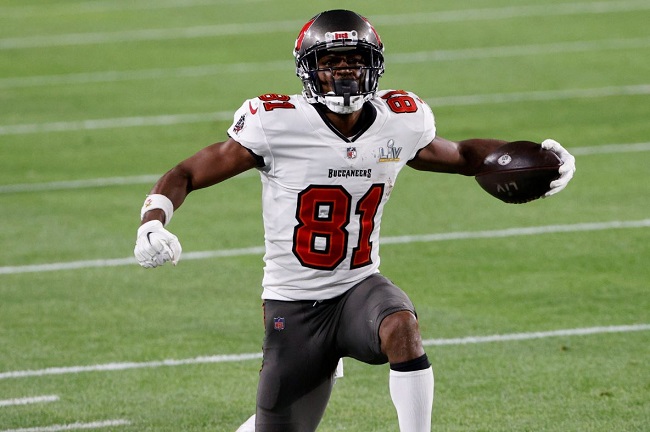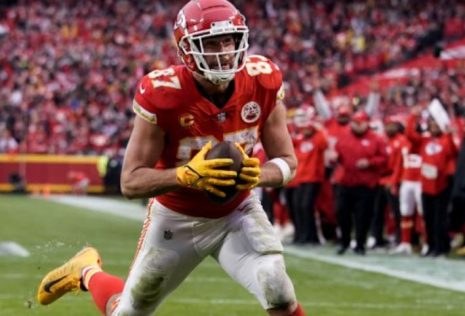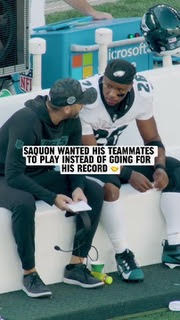Do Stats Incentives Cause Division in NFL Locker Rooms?

It’s well known now that NFL players have contracts that include certain incentives. These incentive payments are paid in addition to a player’s salary and typically involve meeting a statistical requirement. Incentive-laden contracts are common among aging veterans. Take the contract of former Steeler and Tampa Bay Buccaneer WR Antonio Brown.
Brown played the most meaningful years of his NFL career in Pittsburgh. Then, after a short stint with the Raiders, Brown signed with the Bucs during the 2020 season. Then Bucs QB Tom Brady had urged the team to pick up Brown, who was with the team as they won Super Bowl LV.
Brown would re-sign with the Bucs in 2021. He inked a one-year, $3.1 million deal that was full of incentives that would pay him even more. One such incentive would pay him $250K if he played 45 percent of the Bucs’ offensive snaps and the team won another Super Bowl.
That didn’t happen, but Brown missed out on several other incentives when he famously had a meltdown in Week 17 of the 2021 season. Brown refused to go back into Tampa Bay’s game that week against the New York Jets. In the end, he missed out on $1 million worth of incentives. Brown needed eight catches, 55 yards, and one touchdown to cash in one of three bonuses that paid $333K each.
There was some talk that Brown was disgruntled over his lack of playing time and the number of times he was targeted. Whether or not those claims were accurate, Brown made sure he wouldn’t receive any incentive payments when he refused to play that day. Tampa Bay actually cut him the next day.
Brown’s antics and all of these NFL bonus-heavy contracts bring up the question, “do these incentives cause any division in locker rooms?”
Goff to Reynolds for $250K
Near the end of the 2023 season, Detroit Lions QB Jared Goff found out that one of his wide receivers, Josh Reynolds, was 10 yards away from a contract incentive that would pay him an extra $250,000. Goff then decided he would make sure his teammate reached that bonus.
Goff would throw to Reynolds on four consecutive plays to ensure the Lions wide receiver would get an extra $250K. A similar situation happened in Tennessee when QB Ryan Tannehill actually changed plays at the line of scrimmage to ensure his teammate would hit 75 receptions and 1,050 receiving yards. Hitting those numbers meant an extra $500,000 for that Titans receiver.
It’s Simple Economics
Understanding NFL contract incentives is really as simple as understanding basic economic theory. Businesses, consumers, and people in general respond to incentives. NFL players are no different. We can illustrate that with an example provided by the Kansas City Chiefs.
 Entering the final regular season game of the 2023 season, the Chiefs had already clinched a playoff berth. They were the No. 3 seed no matter if they won or lost their final game. The game had no meaning. Because of that, many key players did not play. One key player was TE Travis Kelce.
Entering the final regular season game of the 2023 season, the Chiefs had already clinched a playoff berth. They were the No. 3 seed no matter if they won or lost their final game. The game had no meaning. Because of that, many key players did not play. One key player was TE Travis Kelce.
Kelce was just 16 yards shy of 1,000 receiving yards for the season. Not hitting that number would mean it would be the first season since 2015 that Kelce didn’t reach the 1,000-yard plateau. It didn’t really matter to Kelce though and because there was no monetary incentive for him to reach 1,000 yards, he didn’t play.
On the other hand, DT Chris Jones, a first-team All-Pro last year, played in that game. Why would he risk an injury that could keep him out of the playoffs? Well, he had 1.25 million reasons to play. Jones had 9.5 sacks heading into the season finale. He needed to hit 10 to reach a bonus that would pay him $1.25 million. Jones did get a sack, finished with 10.5 sacks for the season and received a bonus payment of $1.25.
One player didn’t play. The other did. One player was incentivized to play. The other was not. It’s simple economics. There was an incentive for Jones to play. The incentive for Kelce was to take the week off.
Locker Room Division?
Like anything, there is some good and some bad. For the most part, NFL contract incentives are geared toward the ultimate goal – winning a Super Bowl. Eagles RB Saquon Barkley has plenty of examples of how most NFL contracts promote winning, making the postseason, and winning a Super Bowl championship.
One might think Barkley would have an incentive in his contract for scoring touchdowns. There isn’t one. Yes, Barkley still scores touchdowns – 13 total so far this season – but his highest-paying incentives are related to the Eagles performance. If the Eagles win the NFC championship, Barkley gets $250K. If they win the Super Bowl, he gets another $250K.
Now, Barkley also gets $500K if he is a first-team All-Pro ($250K for second team), but such a performance would certainly help the Eagles continue their march toward another Super Bowl run. The Eagles are currently 11-2 and own the second seed in the NFC playoffs.
Would Barkley’s incentives cause any division in the Eagles locker room? Maybe. A teammate might be jealous of Barkley’s built-in bonuses, but that same player could have incentives built into his own contract. What’s more likely to cause division in an NFL locker room is a personality like Antonio Brown.

















